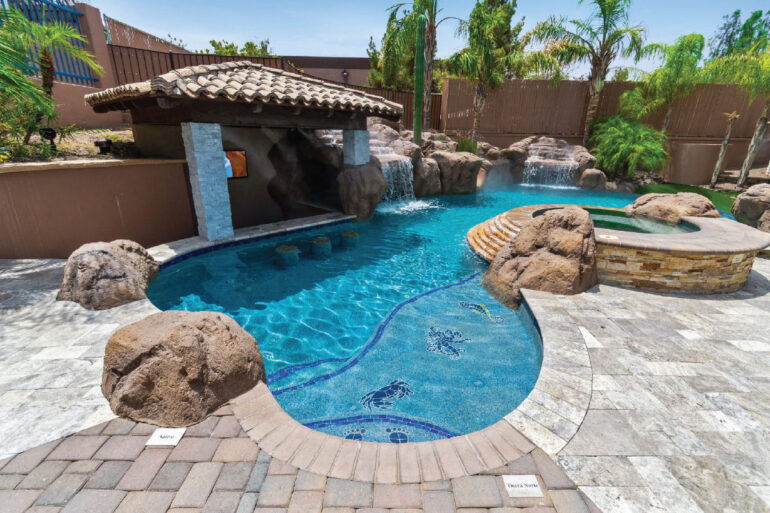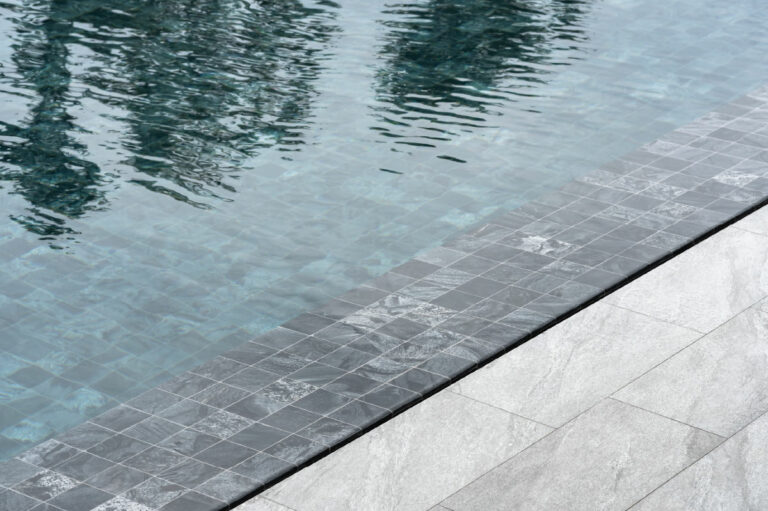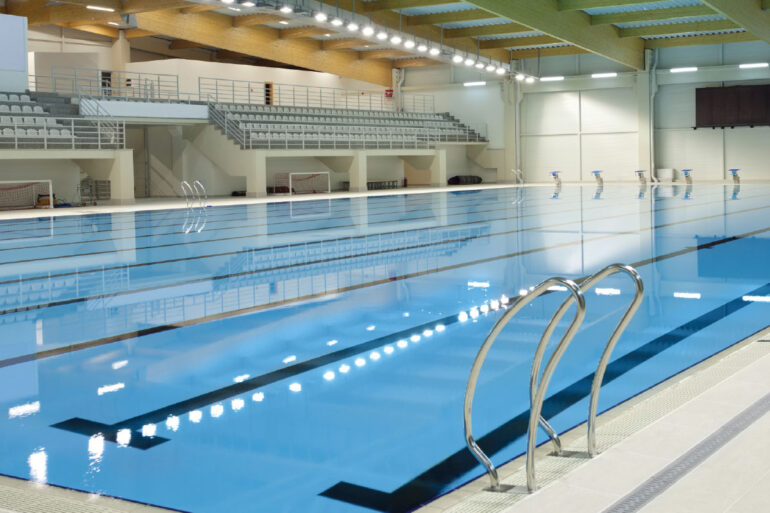When Size Matters
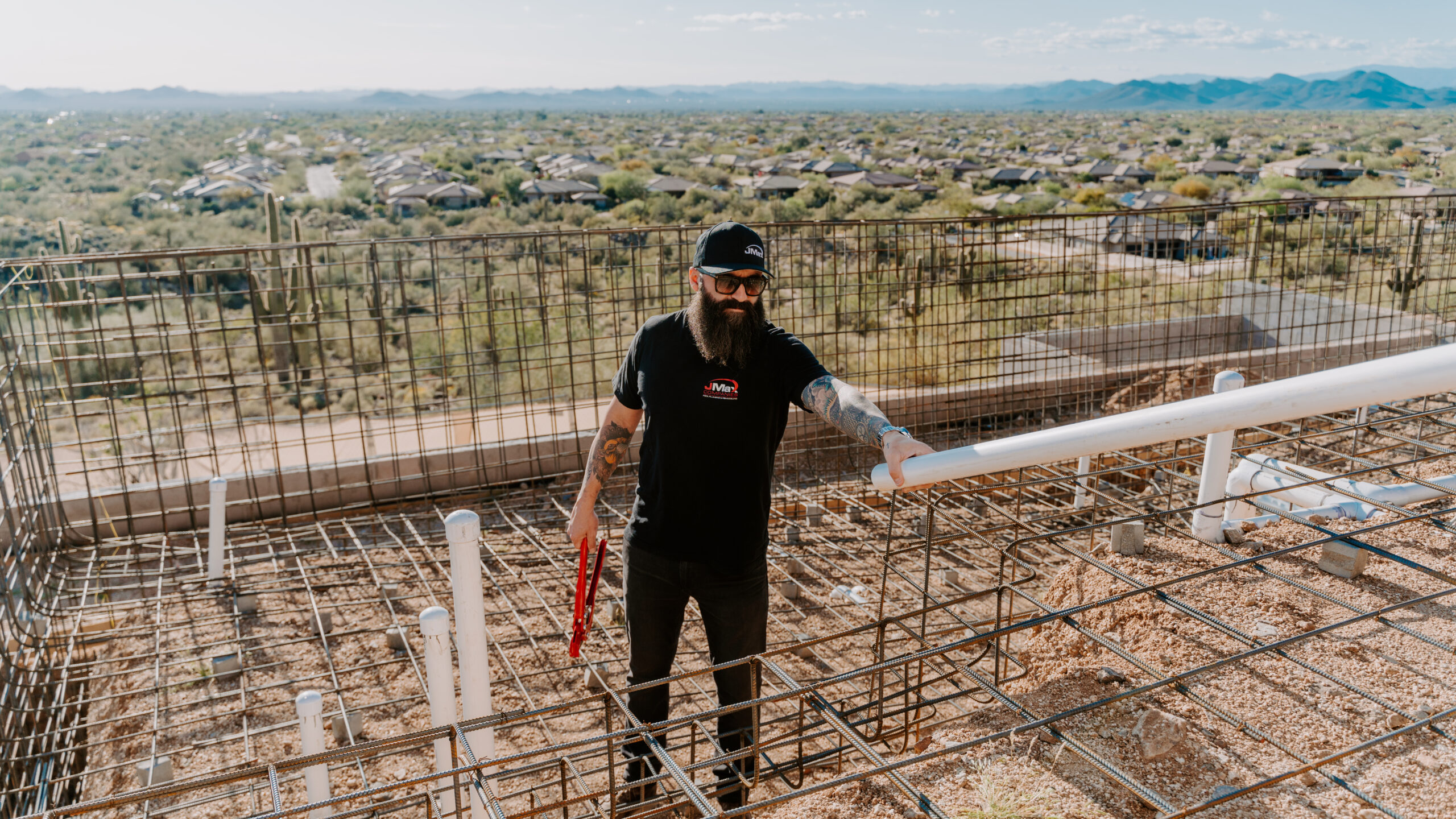
Determining the correct pipe sizes for a pool’s plumbing system is crucial, and builders who shirk the math jeopardize the system’s efficiency and safety.
“We get called to projects regularly for therapy jets not working, and the No. 1 thing we see is someone didn’t do the math to make sure they sized the system right,” says Justin Bowie, founder of JMax Plumbing in Tempe, Arizona.
Bowie says it is ultimately up to the licensed plumber to ensure the right size was installed. The pool builder will develop a plan and hand it off to the plumber. Then, the plumber should confirm all plumbing is sized correctly to accomplish the builder’s wants.
Consequences of undersized pipes
When a pool is installed with pipes that are too small, Bowie says the pump has to work even harder to push and pull the water through, and working harder means using more energy, which also means increased costs and extra wear and tear.
“Too many other times an undersized plumbing system goes unnoticed, and customers aren’t getting the efficiency they could be getting because the pump has to work so hard to overcome a bad install,” he says.
In some cases, a pump may not be able to produce the amount of water needed because it can’t push the gallons per minute range high enough once it defeats all the system head pressure losses.
“Everyone should at least be checking to see if the pipe size they used can deliver the water volume they desire at a reasonable velocity, which will free the system of unnecessary head loss,” Bowie says.
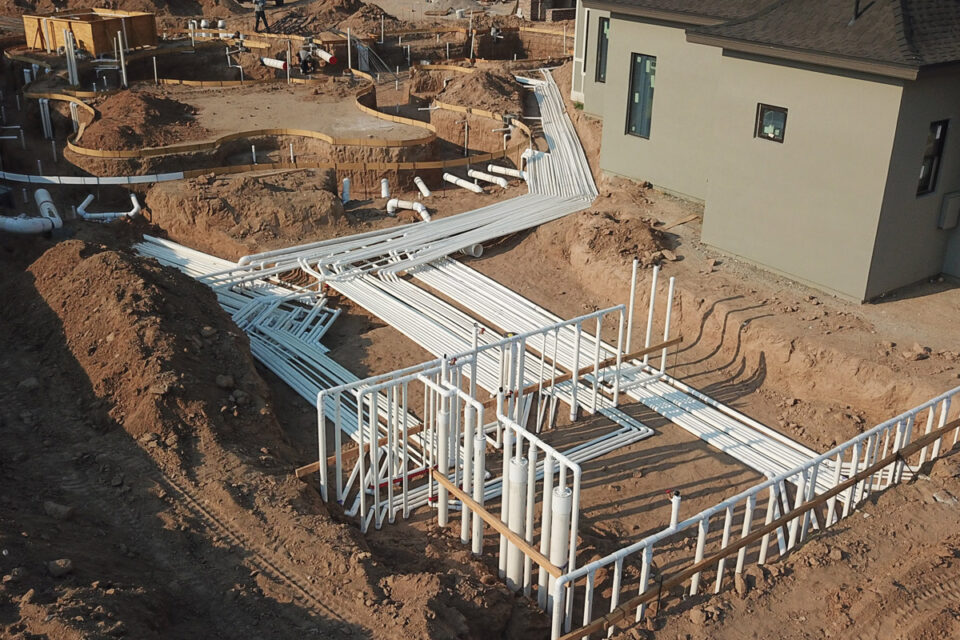
and plumber is key.
Concerns for oversized pipes
When a pipe is too large, other issues ensue. Bowie says one of the biggest concerns with oversized piping is reaching a velocity so low you run into issues with solid materials — like leaves, dirt and rocks — collecting and building up in the line.
Terry Brannon, faculty chair for engineering with GENESIS, the educational arm of the Pool & Hot Tub Alliance, says pipes that are too large waste resources, cost more to purchase and install and potentially fill with sediments that are difficult to clean out.
With nearly five decades of experience as a licensed professional engineer, Brannon has written and contributed to PHTA courses and curricula about pool construction, standards, hydraulics and more.
He warns that if a builder chooses to ignore the optimum pipe velocities, then energy is wasted for the life of the project, performance is diminished and they risk a water hammer.
“Water hammer is a sudden reversal of a pressure wave created when water within the pipe line moves away so fast that it creates a partial vacuum in its wake,” Brannon explains, recalling an incident he saw in person where a large pump was turned on before a valve was opened on a 16-inch raw water pipeline.
“The valve was opened very quickly, and the resulting hammer knocked a 2,500-pound pump set backward about five feet, snapping steel restraining bolts,” he says. “In a much smaller pool setting, I have seen filter tops split and 90-degree bends blown out by the force of a water hammer.”
Tools for choosing the right fit
When it comes to choosing the right size and fit, there’s no room for guesswork.
Bowie says builders must start by determining the desired velocity because velocity is what dictates size. Builders should reference PVC pressure charts, which are provided by each pipe manufacturer and can be found online.
Most of these tools are based on the Hazen-Williams equation or the Darcy-Weisbach equation, which both express the relationship between pipe geometry, roughness and velocity in terms of energy losses.
Recently enacted standards say turnover in residential pools shouldn’t be faster than every six hours, or four times in 24 hours. “Every four hours does not meet the standard, but every eight hours may work fine,” Brannon says. “There actually is no minimum frequency standard for turnover, but water clarity and sanitation dictate several times a day is necessary.”
For example, if a pool is 15,840 gallons, then the six-hour turnover can be calculated like this:

15,840 gallons / (6 hours x 60 minutes per hour) = 44 gallons per minute
Using 44 gallons per minute, the pipe can be selected.
If the answer is less than 36 gallons per minute, you use 36 gallons per minute, Brannon says.
“Selecting the pipe size is only part of the equation,” Brannon says. “Correctly designing a pool circulatory system involves sizing the main drain fitting, the pump, the filter, skimmers and all the pipe connecting these.”
Solutions for existing systems
To address systems that have incorrect sizing without tearing out the pool, Bowie suggests looking at other areas where head losses can be reduced.
“If I had a water feature line that I needed to get more water out of — and it was not already maxed out on velocity in the line size that was installed — but the pump was maxed out on GPM production, I would look for other things on the plumbing system it’s connected to creating head loss to achieve higher flow,” he says.
These corrections could include replacing undersized valves (2-inch valve installed on 3-inch line), cleaning dirty filter cartridges more often and not having too many accessory components all on the same return line.
Don’t wait for there to be a problem to start trying to plumb a pool correctly.”
Justin Bowie, JMax Plumbing
“The biggest advice I would share is don’t wait for there to be a problem to start trying to plumb a pool correctly,” Bowie says. “An ounce of prevention is worth a pound of cure.”


